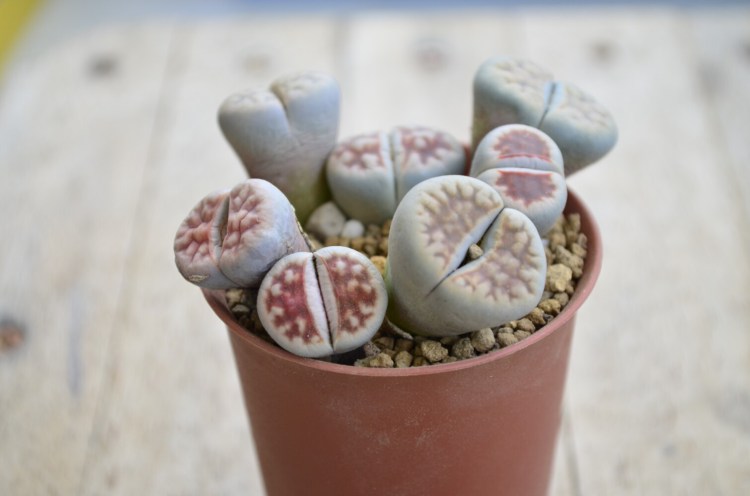It’s time to turn our attention to houseplants.
The outdoor garden has been our salvation since March when most of our regular entertainments were limited if not outright canceled. But now outdoor gardening is over, even the usually odious task of raking leaves. The next four months are going to be difficult, but we will alleviate some of the misery with houseplants.
Everyone has some experience with houseplants. They were in our childhood homes. And the first time we left those homes, we got a spider plant or a philodendron that was easy to grow near the window of our dorm room or cheap apartment and we even remembered to water it occasionally.
My wife Nancy and I gave our two eldest grandchildren succulents when they headed off to college simply because they are almost impossible to kill.
When I called him for a column a few weeks ago, Bill Kinney of Allen, Sterling & Lothrop told me that what he calls “grandmother plants” are coming back into vogue because they also are bulletproof.
I think, however, that people are going to want more exotic and challenging plants this winter. We can’t leave home, and we are going to want plants that produce beautiful blossoms or otherwise entertain us, and my guess is we will be willing to do a little work for that entertainment.
The classic of the beautiful flowering plants is the orchid – or orchids, because there several types. And they are nice because they are, oxymoronically, simple and challenging.
The simple part comes because you buy them at the local nursery when they are in bloom, and the blossoms last a long time, so you can enjoy them for a couple of months without doing a thing. The challenge comes in getting them to blossom again.
Slipper orchids (Paphiopedilum) look like the lady slippers you find in the woods; they prefer medium light, such as an east-facing window, and require regular fertilization.
The moth orchid (Phalaenopsis) has longer-lasting flowers than most other orchids, meaning if you buy correctly you’ll have months of blooms and, perhaps, a year of blooms, if the plant is kept in good balance for watering – not drying out but also not sitting in a plant pot full of water. Phalaenopsis need medium to bright indoor light while preparing to bloom but can be anywhere when they are in bloom. As the flowers go by, pinch or cut each one off the stalk. When all the buds and blooms are gone, move the plant back to a bright area, continue to water carefully and wait for new buds or stalks to form.
Corsage orchid (Cattleya) is considered tougher to grow and needs a lot of light to rebloom. These orchids want to be warm, with a drop of temperature at night. Cut the stem off after the plant blooms.
The nun orchid (Phaius) needs bright light. It starts blooming in January, and grows several feet tall. After the plant blooms, the foliage is ugly; cut it all off, and it will re-sprout.
Now some more unusual plants.
Mimosa pudica, or the sensitive plant, would be fun. When I wrote about “The Incredible Journey of Plants” by Stefano Mancuso a couple of weeks ago, I said I intended to buy his “The Extraordinary Genius of Plants.” I’m now reading that book, and enjoying his description of how the sensitive plant’s leaves move when touched. Online research says you can plant seeds indoors in the spring, although the plant will do better with artificial light. You can buy seeds online. I’m easily entertained, so I will enjoy watching the plant react to my touch. I expect young children would be thrilled.
Mancuso also mentions living stones (Lithops), which have developed to look like stones in the South African desert. They should be seldom watered from fall to spring, and they only ever have two leaves – with new leaves taking moisture and nourishment from the dying old leaves. Lithops developed over centuries to look like pebbles as a defense mechanism, to prevent animals from eating them.
Enough of plant intelligence. Let’s go just for unusual.
The desert rose (Adenium obesum) has a large, swollen stem; its leaves and bright, trumpet-shaped flowers in red, pink and white, grow at the tip of the stems, and they are gorgeous. The plants can grow two to three feet tall, but will grow more slowly if you keep them pot-bound.
I wrote an entire column about clivias three years ago because I was shocked when I noticed a nursery selling them for $900 a plant. They can be found a lot more inexpensively, and are worth it, with huge, striking orange blossoms. In Maine, clivias like to spend summers outdoors. Don’t water them when you bring them inside in late September. They’ll blossom in November or December, at which point you start watering them again.
These are just a few suggestions. Go to a nursery (wearing a mask that covers your nose, too) or shop online and pick up some plants you like. You will be well entertained.
Next week, I’ll write about growing food indoors this winter. Stay tuned.
Tom Atwell is a freelance writer gardening in Cape Elizabeth. He can be contacted at: tomatwell@me.com.
Send questions/comments to the editors.



Success. Please wait for the page to reload. If the page does not reload within 5 seconds, please refresh the page.
Enter your email and password to access comments.
Hi, to comment on stories you must . This profile is in addition to your subscription and website login.
Already have a commenting profile? .
Invalid username/password.
Please check your email to confirm and complete your registration.
Only subscribers are eligible to post comments. Please subscribe or login first for digital access. Here’s why.
Use the form below to reset your password. When you've submitted your account email, we will send an email with a reset code.